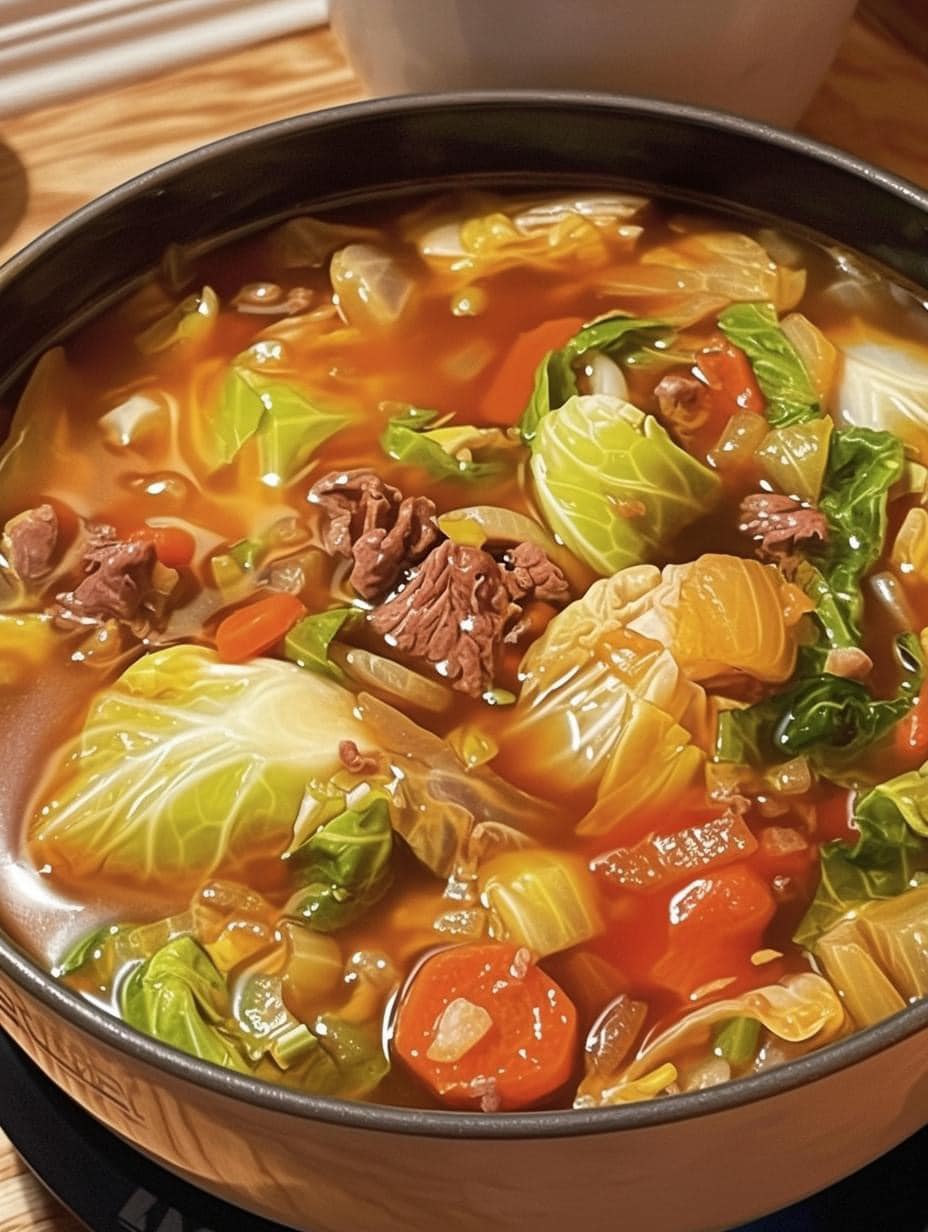1. Prepare the Vegetables:
Begin by washing and chopping all your vegetables. Take a moment to appreciate the vibrant colors and textures. This is a crucial step, as the quality and freshness of your vegetables will greatly influence the soup’s flavor.
- Cabbage: Remove any tough outer leaves and cut the cabbage into quarters. Remove the core and chop the remaining cabbage into bite-sized pieces.
- Onion, Carrots, and Celery: Dice these vegetables uniformly, as they will cook evenly and contribute to the overall texture of the soup.
- Garlic: Mince the garlic and set it aside. Fresh garlic adds depth and aroma to the dish.
2. Sauté the Aromatics:
In a large pot or Dutch oven, heat the olive oil over medium heat. Once hot, add the diced onion, carrots, and celery. Sauté these vegetables for about 5-7 minutes, or until they begin to soften and the onion becomes translucent.
Next, stir in the minced garlic and cook for an additional 1-2 minutes, just until fragrant. Be careful not to burn the garlic, as it can turn bitter.
3. Build the Soup Base:
Add the chopped cabbage to the pot, stirring to combine with the sautéed vegetables. Let the cabbage wilt for a few minutes, stirring occasionally. This helps to soften the cabbage and release its natural sweetness.
Now, pour in the diced tomatoes (with their juice) and the broth of your choice. This is where the soup begins to take shape. Stir in the bay leaves, dried thyme, and dried oregano, along with salt and pepper to taste.
Tip: If you want a spicier kick, consider adding a pinch of red pepper flakes at this stage.
4. Simmer the Soup:
Bring the mixture to a gentle boil over medium-high heat, then reduce the heat to low and cover the pot. Allow the soup to simmer for 30-40 minutes. This simmering process allows the flavors to meld beautifully, creating a rich, comforting broth.
Optional: If you’re adding potatoes or green beans, now is the time to add them to the pot. They’ll cook through and add extra heartiness to your soup.
5. Taste and Adjust:
After about 30 minutes, check the soup for flavor and doneness. The cabbage should be tender but still have a slight bite. Adjust the seasoning as needed, adding more salt, pepper, or herbs according to your preference. If you prefer a thicker soup, you can blend a portion of the soup using an immersion blender for a creamier texture.
6. Serve and Garnish:
Once the soup is ready, remove it from the heat and discard the bay leaves. Ladle the warm soup into bowls and garnish with fresh herbs like chopped parsley or dill for an extra burst of flavor.
Serving Suggestions:
This cabbage soup is delicious on its own, but you can elevate your meal by serving it with:
- Crusty bread or dinner rolls for dipping
- A side salad for freshness
- Grated Parmesan cheese or croutons for added texture
The Experience:
Gather your loved ones around the table, and let the aroma of your cabbage soup create a cozy atmosphere. As you all share stories and laughter, you’ll find that this dish isn’t just about nourishment; it’s about connection and comfort.
So take your time, enjoy the process, and savor the delicious results. This hearty cabbage soup will not only warm your belly but also create lasting memories with every spoonful. Happy cooking!
